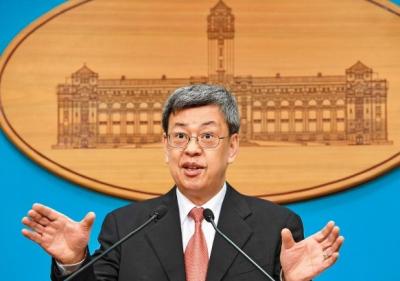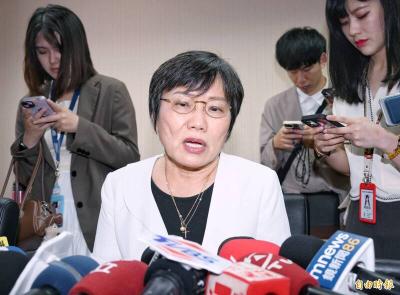Former Democratic Progressive Party (DPP) chairman Lin I-hsiung(林義雄) yesterday announced that he is to go on a hunger strike on Tuesday next week to urge the government to halt construction of the Fourth Nuclear Power Plant in New Taipei City’s Gongliao District (貢寮).
In a press release, Lin — who is well-known for his advocacy for the anti-nuclear movement, condemned the government for insisting on continuing building the plant — despite most public opinion polls showing that the majority of Taiwanese are against the plant being put into operation.
“The controversy has been there for almost three decades. More and more people are now starting to realize that electricity is in abundant supply in Taiwan and the plant is a meaningless squandering of time and money,” said Lin, who recently joined a group of academics and politicians who are seeking to establish a political group called Taiwan Citizen Union.
“If the majority of the public supports stopping construction of the Gongliao plant and those in power still ignore their calls with sinister measures, then I would say that our democracy is in crisis,” Lin said, adding that the issue of nuclear power in Taiwan is one of “life and death,” citing the 2011 disaster at Japan’s Fukushima Dai-ichi nuclear power plant.
The 73-year-old Lin said he had originally planned to start his indefinite hunger strike on March 24, but postponed it due to the Sunflower movement protests.
Lin will conduct his hunger strike at Gikong Presbyterian Church (義光教會) on Taipei’s Xinyi Road.
The church was converted from the Lin family’s former residence after his mother and twin daughters were murdered there on Feb. 28, 1980, by an unknown assailant.
His eldest daughter, Lin Huan-chin (林奐均), then nine years old, survived the attack.

Taiwan would welcome the return of Honduras as a diplomatic ally if its next president decides to make such a move, Minister of Foreign Affairs Lin Chia-lung (林佳龍) said yesterday. “Of course, we would welcome Honduras if they want to restore diplomatic ties with Taiwan after their elections,” Lin said at a meeting of the legislature’s Foreign Affairs and National Defense Committee, when asked to comment on statements made by two of the three Honduran presidential candidates during the presidential campaign in the Central American country. Taiwan is paying close attention to the region as a whole in the wake of a

President William Lai (賴清德) has appointed former vice president Chen Chien-jen (陳建仁) to attend the late Pope Francis’ funeral at the Vatican City on Saturday on his behalf, the Ministry of Foreign Affairs said today. The Holy See announced Francis’ funeral would take place on Saturday at 10am in St Peter’s Square. The ministry expressed condolences over Francis’ passing and said that Chen would represent Taiwan at the funeral and offer condolences in person. Taiwan and the Vatican have a long-standing and close diplomatic relationship, the ministry said. Both sides agreed to have Chen represent Taiwan at the funeral, given his Catholic identity and

Chinese Nationalist Party (KMT) Chairman Eric Chu (朱立倫), spokeswoman Yang Chih-yu (楊智伃) and Legislator Hsieh Lung-chieh (謝龍介) would be summoned by police for questioning for leading an illegal assembly on Thursday evening last week, Minister of the Interior Liu Shyh-fang (劉世芳) said today. The three KMT officials led an assembly outside the Taipei City Prosecutors’ Office, a restricted area where public assembly is not allowed, protesting the questioning of several KMT staff and searches of KMT headquarters and offices in a recall petition forgery case. Chu, Yang and Hsieh are all suspected of contravening the Assembly and Parade Act (集會遊行法) by holding

Lawmakers from the Democratic Progressive Party (DPP) yesterday established a friendship group with their counterparts in Ukraine to promote parliamentary exchanges between the two countries. A ceremony in Taipei for the Taiwan-Ukraine Parliamentary Friendship Association, initiated by DPP Legislator Chen Kuan-ting (陳冠廷), was attended by lawmakers and officials, including Deputy Minister of Foreign Affairs Francois Wu (吳志中) and European Economic and Trade Office in Taiwan Director Lutz Gullner. The increasingly dire situation in Ukraine is a global concern, and Taiwan cannot turn its back when the latter is in need of help, as the two countries share many common values and interests,